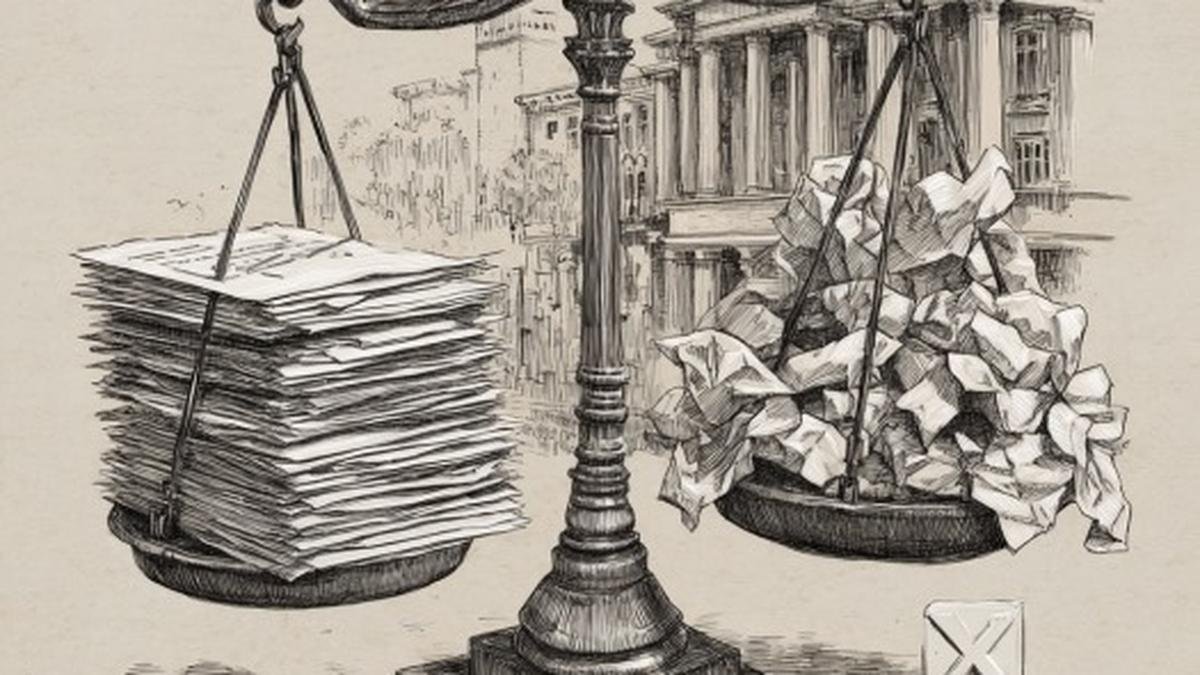Retraction penalties barely dent rankings; call for stronger reforms

By introducing negative marking for retracted research papers, NIRF attempted to resolve the problem of unethical research practices followed to game their system. Experts say the introduction of negative marking at this stage works as sensitisation, forcing universities to acknowledge and report retractions. For better accountability, stricter policies like anti-plagiarism rules that are already adopted by UGC and IITs need to be expanded to cover all kinds of retractions, beyond plagiarism.
The names that came out on top didn’t bring any surprises. The top 100 institutions in the overall category comprised 24 State universities, 22 private deemed universities, 19 IITs and the Indian Institute of Science (IISc), nine private universities, eight National Institutes of Technology, seven Central universities, five medical institutions, four Indian Institutes of Science Education and Research, one college, and the Indian Agriculture Research Institute.
The Indian Institute of Technology (IIT), Madras, retained its top rank in the Engineering category for the 10th year in a row, filtered down. It also bagged the top slot in the innovations category and the newly introduced Sustainable Development Goals (SDG) institutions category.
The IISc, Bengaluru, topped the Universities category for the tenth consecutive year and also stood first in the Research Institutions category for the fifth consecutive year. IIM Ahmedabad was the best institution for Management studies for the sixth consecutive year. The All India Institute of Medical Sciences (AIIMS), New Delhi, occupied the top slot among Medical institutions for the eighth consecutive year and also topped the rankings in the Dental category for the first time. AIIMS was ranked eighth in the overall category.
An area of change this year was that the NIRF announced to award negative scores to higher educational institutions for papers that have been retracted from journals in the last three calendar years and their corresponding citations. Both the number of retractions as well as citations from these retracted papers were taken into account for negative marking. NIRF says the penalty will be harsher next year, and the negative scoring system will be fine-tuned to be more effective.
Yusuf Akhter, a member of faculty at Biotechnology at Babasaheb Bhimrao Ambedkar University, Lucknow, says that since the penalty in rankings is minor, the corrective measure isn’t very effective, even though the problem of retractions is significant. The new negative marking in NIRF rankings is a start, but its weightage is too small to be a deterrent. He says, “In India, awareness is still developing. Other countries have stricter rules. In India, people can still get promotions and benefits even with retracted papers”.
Mr. Akhter says that policymakers and institutions are only beginning to act, while international systems like Retraction Watch are more established. Big publishers have ethics committees, but the process is slow and resource-heavy; sometimes editors aren’t motivated to pursue cases. If a paper is retracted for misconduct, there should be strict disciplinary action against faculty, like UGC’s anti-plagiarism policy, which allows blocking promotions or increments.
Mr. Akhter says that current ranking parameters give too much weight to publication numbers and citations, so substandard institutions can game the system. The new negative marking for retractions in NIRF is a good first step, but it’s too weak, as institutes can simply get past it by pushing out more papers. To make any progress, there is a need for policy revamp by the Ministry of Education and the Ministry of Science and Technology. “For now, the value lies in starting the conversation; improvement can come if policies are reviewed and strengthened over the next few years”, he says.
Published – September 08, 2025 04:23 pm IST
Discover more from News Hub
Subscribe to get the latest posts sent to your email.





